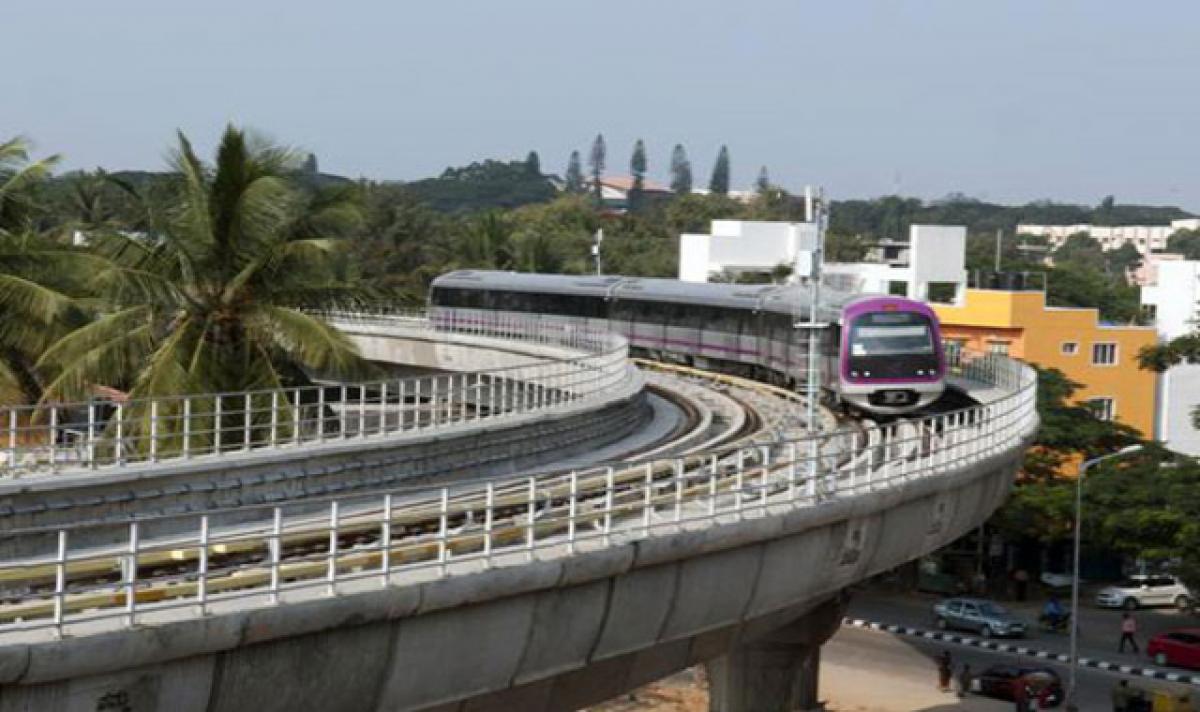Live
- ‘Dilruba’ team comes with first single ‘Aggipulle’ unveiled
- Legal drama ‘Court - State vs A Nobody’ set for March release
- Priyadarshi’s ‘Premante’ gets announced with grand launch
- Minister Jupally Reviews Rythu Bharosa Scheme Implementation in Nizamabad
- Wanaparthy collector reviews on survey of welfare schemes
- NDRF, NDA always come to rescue in case of disasters
- ‘Bhairavam’ teaser is just around the corner
- ‘Shiva Sambho’ blends culture and devotion in Telugu cinema
- Akash Jagannadh extends generous support to veteran Actress Pavala Syamala
- 'Attack' on Kejriwal: Atishi claims BJP wants to harm ex-CM, Parvesh hits back
Just In

The very naming of Vijayawada Metro as Amaravati Metro Rail Corporation (AMRC) is misleading. The Government of India seems to be not interested in financing this project on the grounds of the city having low population and a low ridership.
The very naming of Vijayawada Metro as Amaravati Metro Rail Corporation (AMRC) is misleading. The Government of India seems to be not interested in financing this project on the grounds of the city having low population and a low ridership.
Till date, we have not seen a scientific study on Vijayawada’s traffic that recommends metro rail as the only solution for its traffic problems. If at all a study has been done, the same is not available in the public domain. We would like to argue that the city will not grow rapidly and the elevated metro project will become a huge financial disaster and a white elephant on the city in particular and the people of Andhra Pradesh in general.
The city and its growth
Vijayawada Municipal Corporation (VMC) has witnessed only a modest growth over the past five decades. After a very high growth of 52% during 1981-91, the decadal growth rate has declined significantly to 20-22% in the last two decades (Table 1).
It is unlikely that Vijayawada will record a very high population growth. This is because the population growth rates in Andhra Pradesh have been declining in the last three decades. The decline has been significant in Guntur and Krishna districts, more so in Krishna district to the extent that there is a net decline in its rural population (Table 2).
The urban population growth rates have been only about 20-22 per cent in the last decade in these districts. These are located in highly fertile Krishna river delta and there is a vibrant agricultural economy in the region. The population will not be enough to sustain a metro rail project. The bus rapid transit system (BRTS) in the city, built on a 15.5 km stretch, is lying unutilised due to faulty implementation and also for want of traffic.
Will there be a large-scale in-migration? Most unlikely. One should remember that AP is a smaller state now (with only 13 districts) and has different geo-climatic conditions and regional disparities. The temperatures are hot and humid in Vijayawada region.
The four districts of Rayalaseema and Nellore district will continue to depend on the adjacent mega cities of Hyderabad, Bengaluru and Chennai for employment and business purposes. The youth from these districts will not migrate to Vijayawada for training in IT sector. The master plan projections of high population growth and employment generation in Amaravati are highly speculative and misleading.
Metro will be a white elephant
In Hyderabad city, which has 80 lakh population, the ongoing metro has three corridors for a length of 71.16 km. The private developer, L&T, wrote to Telangana state government in September 2014 stating that this project was commercially not viable. This is despite giving 269 acres of prime lands in the city for commercial development, along with depots.
The cost estimate of this project, which began with Rs 12,132 crore in 2012, is known to have crossed Rs 20,000 crore at present. It may further go up. Vijayawada metro’s cost estimate of Rs 6,823 crore will definitely cross Rs 10,000 crore. The city has only two main roads Eluru Road and MG Road (Bandar Road).
Both these roads are going to be physically obliterated and defaced by the elevated corridors. Take a look at Hyderabad roads. The streets have become ugly. International evidence, based on 258 transportation projects, reveals that the cost estimates of such projects were highly and systematically misleading. (Writer is a faculty member, Centre for Economic and Social Studies, Hyderabad)
By Dr C Ramachandraiah

© 2025 Hyderabad Media House Limited/The Hans India. All rights reserved. Powered by hocalwire.com







